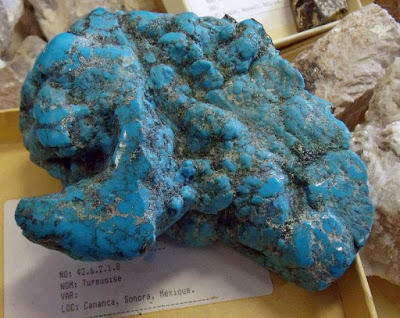Arizona Peridot
Are you involved in jewelry making and in need of peridot? We sell strands of Arizona faceted peridot beads. These beads are faceted from peridots mined from the San Carlos Apache Reservation in Arizona. They are skillfully dug out of a volcanic basalt matrix by the local miners. Selection is then made from among the rough peridot and the chosen rough gems cut to specification.We try to choose the best quality of peridot. Arizona peridots are of very good quality and therefore treatment or any kind or enhancements are not needed.
Arizona faceted peridots are indeed beautiful. They have an olive green color and a crystal-like appearance which makes them glow magically in the presence of light at night. The peridots are able to split and bend the rays of light passing through them. This consequently gives them a bright and sparkly appearance making them one of the most beautiful gemstones.
Peridot is a gemstone of its own kind, its an all time beauty. It has been a favourite of jewelry designers and jewelry lovers since time immemorial. Peridot was being mined in Egypt from as early as 1500 BC. Ancient Egyptian records show that it was being mined at Topazo Island. This island is now known as St John's Island. Peridot was prized in Egypt because of its beauty and its crystal-like appearance that made it radiate at night in the presence of light. They were placed in Pharaoh's burial treasury. Peridot holds significance as the national gemstone in Egypt.
Europe too was not left behind in the love for peridots. European emissaries used to bring back with them large parcels of peridot from their travel abroad. They would use the peridots for decorative purposes. They used them to decorate churches and also to decorate robes. A cathedral in Cologne, Germany is an example of the places that were decorated with peridots in the ancient ages.
Key figures in history also loved peridots. Cleopatra, an Egyptian queen who was famous for her beauty and her love affairs with Rome's Julius Caesar, wore ornaments made from peridots. France's Napoleon also used peridot .
Peridot's green colour has led to it often being confused with emerald which is also green. The ornaments which Cleopatra wore were for example were mistaken for emeralds for quite a long time . The peridots in ancient Egypt and those at the cathedral in Cologne were also thought to be emeralds for quite a long time.
Peridot is also the birthstone for those who are born in August. As a birthstone, peridot is deemed capable of instilling power and influence. It is also deemed capable of warding off evil powers. Peridot also symbolizes strength. Peridots have spiritual significance in ancient times, peridots would be used to ward off evil spirits in some places.
Peridots are also a symbol of purity in Christian forklore. In addition, they are used as healing crystals
Arizona faceted peridot beads are popular and a gemstone used as the November birthstone. Our beads are temporarily strung in sixteen inch length. These beads can be used to make various kinds of jewelry among them pendants, chains, necklaces, earrings and bangles.
Arizona faceted peridots are much loved across the world because of their stunning beauty and good quality. A peridot is a perfect gift for a loved one, he or she is likely to cherish it. Peridots are popular with celebrities too. Many celebrities have had them for engagement rings. The fact that celebrities have gone for it attest to how precious it is as a gemstone. It is indeed a very highly sort after gemstone. Wearing an accessory made from Arizona faceted peridot can greatly improve your look, adding a great deal of elegance and class to your outfit.
http://www.rincontrading.com/peridot-arizona
Monday, October 19, 2015
Friday, October 9, 2015
Answering the mystery of turquoise provenance

CrediThis is a turquoise sample from Cananea, Sonora, Mexico.
t: Wikipedia; CC BY 2.0
Turquoise has had cultural significance for Native American peoples in the southwestern United States and Mexico for more than a millennium, and turquoise artifacts have been recovered from archaeological sites hundreds of kilometers distant from known sources of the mineral. Evidence for pre-Hispanic turquoise mining has been recognized across much of the southwestern United States and northern Mexico, including as far north as Leadville, Colorado, and as far south as Zacatecas.
Detailed archaeological studies of ancient turquoise mines are rare, and little is known about the timing of their exploitation or the cultural identities of the miners In this study, Alyson M. Thibodeau and colleagues show that many geological sources of turquoise in the southwestern U.S. and northern Mexico can be distinguished from each other through the measurement of lead and strontium isotopic ratios. These isotopic analyses thus provide a new way to investigate the mining and movement of this mineral in prehistory.
Reference:
Isotopic evidence for the provenance of turquoise in the southwestern United States
A.M. Thibodeau et al., Dickinson College, Carlisle, Pennsylvania, USA. Published online ahead of print on 3 June 2015; DOI: 10.1130/B31135.1 Note : The above story is based on materials provided by Geological Society of America
Subscribe to:
Comments (Atom)

